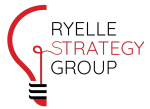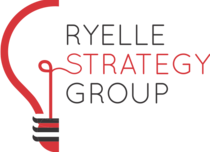5 Top Workplace Trends You’ll See in 2023 | Ryelle Strategy Group
By: Ryelle Strategy Group
What workplace trends will we see in 2023?
2022 saw a range of new workforce challenges. We continued to see the impact of the COVID-19 pandemic on the workplace, which has sparked a rethinking of office culture. This rethinking predominantly revolves around supporting hybrid or remote-friendly policies, as well as an increased focus on wellness and mental health supports in the workplace. This evolving workplace culture aims to respond to the “Great Attrition” and “quiet quitting” trends, which have placed a renewed focus on the needs of the employee. On a global scale, we’ve seen increased inflation and an oncoming recession that has caused workplace and employer priorities to shift significantly.
With the new year upon us, it’s the perfect time to take stock of how you plan to achieve your goals. To start, let’s dive into the top 5 workplace trends this 2023—and how you can adapt your organizational culture and nurture the talent behind every milestone.
5 top workplace trends for 2023
TREND #1: Quiet Hiring
The second half of 2022 in the workplace was dominated by stories of “quiet quitting.” But what does it mean, exactly, when someone “quietly quits?” While it’s not exactly the “Great Attrition” previously observed, it’s one step closer: the remaining exhausted workforce stays on the job, but the go-getters are gone.
The stress brought on by the pandemic and ongoing economic uncertainties has forced many people to reevaluate their priorities—specifically, how much time and effort they put into work. So, while a lot of people are still clocking in, many of them are “quietly quitting,” in the sense that they no longer feel the need to go “above and beyond.”
In the wake of this trend, the remaining competitive talent has abundant choices. For organizations, this can easily be an opportunity, rather than a roadblock. Companies can prevent “quiet quitting” and a further exodus of skills and capabilities by empowering teams to deliver and grow. Providing current employees with upskilling and offering professional development and growth opportunities will yield a workforce that is invested in the success of the organization and feels that they have benefited as well. Strengthening employee lifecycle planning in areas such as on-boarding process and talent management can increase overall organizational performance and promote high-performing teams.
TREND #2: Hybrid Work/Flexibility
COVID-19 has fundamentally changed the way people work—and the way they want to work. Employees are increasingly looking for flexible work arrangements that fit their lifestyles, most popularly remote or hybrid working policies. This has prompted many organizations during the pandemic to invite and hire geographically diverse candidates.
But with the world slowly returning to pre-pandemic practices, many companies are already rethinking back-to-office strategies. Unsurprisingly, there has been pushback, resulting in many employees looking for other opportunities that offer flexibility, first and foremost.
To retain employees, organizations will have to keep flexibility at the forefront of their HR management practices. It’s crucial to find ways to increase employee engagement and promote high-performing teams through a holistic HR infrastructure review that evaluates existing policies, procedures, and performance management frameworks, continually exploring areas for improvement.
TREND #3: Maximizing Employee Satisfaction and Productivity
With hiring policies trending towards fully remote or an in-office and remote working hybrid, managers face the dual challenge of managing workflows and job satisfaction for employees who may work in different time zones and may experience a sense of disconnectedness. So, how can leaders equip individual team members with the necessary means to function as a high-performing and united team?
To maintain cohesion, cooperation, and engagement among team members, leaders will need to look for new ways to support their teams. Creating open lines of communication, as well as anonymous channels for employee feedback, within an organization is critical to building successful teams. Using measurement tools such as surveys, interviews, and roundtables offers the opportunity to create benchmarks for evaluating organizational effectiveness. Similarly, to bolster employee satisfaction, instituting regular touchpoints between managers and employees to review KPIs and professional growth plans will empower team members to be active and engaged.
For companies looking to inspire commitment from their workforce, now is an ideal time to explore transformational change processes that will assess existing policies and procedures, identify gaps and opportunities, and chart a course for sustainable long-term business success.
TREND #4: Prioritizing Employee Mental Health & Wellness
A strong workplace culture is the foundation of a successful organization. With employees experiencing burnout and mental health issues as they juggle the personal and professional, it’s a critical time for organizations to signal to employees that they are supported.
Now, more than ever, every organization should have progressive mental health and wellness policies and the right messaging around it. Companies should actively provide employees the right channels to seek the support they need to help them address roadblocks they’re facing at work, and ultimately improve their productivity.
TREND #5: Building a Skills-Based Organization
Rather than continue to operate on the traditional model of work, there is a move towards focusing on hiring for skills rather than for specific roles. Adopting a skills-based approach to workforce decision-making enables organizations to bolster their workforce for future success and hire non-traditional talent that can help bring success to the next level.
This can be achieved by empowering human resources teams by undertaking an organizational review to build an existing skills matrix, identifying what the most valuable skills are for your organization, and integrating performance management and talent management measures to ensure that the right talent is recruited.
Prioritizing Organizational Transformation to Achieve Results
The above trends point to an increased focus on equipping and empowering employees to build a unified workforce striving towards an organization’s strategic, organizational, and business objectives.
Whether you’re in the beginning stages of rethinking the employee life cycle or you’re entering the next phase of growth and need to scale for capacity, Ryelle Strategy Group can help.
Ryelle’s People, Culture, and Capacity services were developed from years of extensive strategy consultation with NGO, private, and public organizations around the world, catering to the full life cycle of an organization, from onboarding and talent management to internal mobility, ongoing professional development, and growth. Through a partnership with Queen’s University’s Industrial Relations Centre and their capacity building platform, we’re able to provide enhanced services that offer change management and workplace conflict resolution strategies powered by foundational knowledge and practical skills.
Through success stories and case studies, we’ve developed a full suite of organizational transformation services that enhance an organization’s ability to grow and evolve.
These services are designed to help companies retain and cultivate people talent by helping to develop frameworks for workplace culture, employee recruitment and retention, and professional development opportunities.
- People: Effectively supporting and engaging employees leads to a strong workplace culture and demonstrates a strong infrastructure to support outcomes. Employee life cycle planning that includes onboarding, employee engagement, talent management and performance management, increases organizational performance, promotes high performing teams, and enhances workplace culture.
- Culture: A positive and vibrant workplace culture attracts talent, drives engagement, and promotes employee satisfaction, which are all critical success factors when organizations modernize, transform, and navigate through times of change. Our change management approach enables our clients to design, build, and execute strategies to ensure successful implementation of changes to systems, programs, and structures.
- Capacity: Building capacity to enable people, teams, and organizations to drive outcomes is foundational to our work. Working in partnership with our clients, we identify opportunities to support staff development, work alongside your team to develop and execute strategy, lead content creation to facilitate high-performing teams that drive results, and act as an extension of your team, helping to lift and execute the work.
By combining human resources with organizational transformation, training, and growth, we have seen success in empowering talent, enabling increased collaboration, and achieving sustained growth through an integrated “people-first” approach. As companies begin to assess the post-pandemic nature of their workplaces, we are here to act as a guide for transformation and design, supporting you as you develop and execute customized people management strategies that drive outcomes and achieve desired results.
If you’d like to learn how Ryelle’s People, Culture, and Capacity services can help your organization, reach out to our team of experts for a complimentary consultation.


